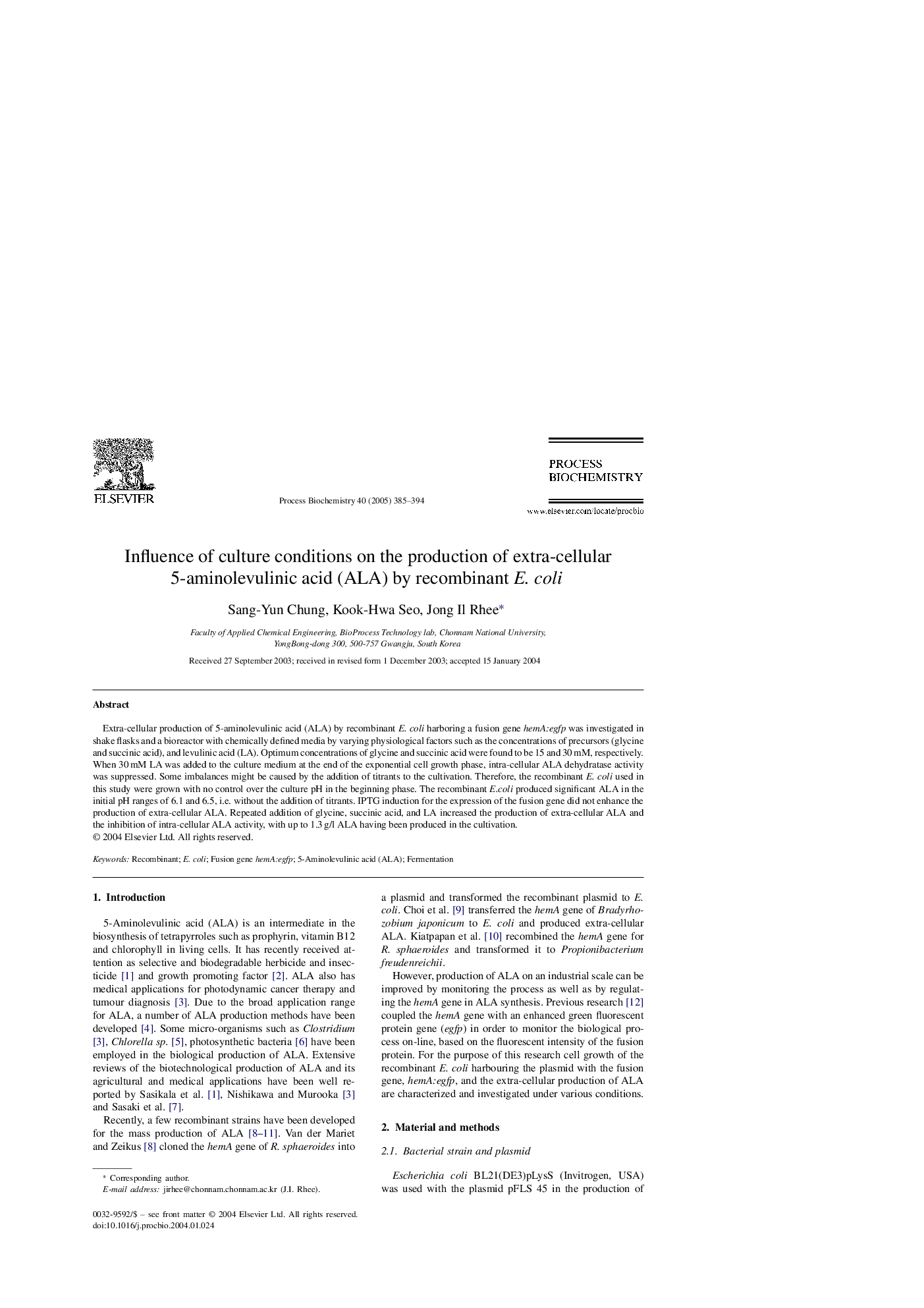| Article ID | Journal | Published Year | Pages | File Type |
|---|---|---|---|---|
| 10236212 | Process Biochemistry | 2005 | 10 Pages |
Abstract
Extra-cellular production of 5-aminolevulinic acid (ALA) by recombinant E. coli harboring a fusion gene hemA:egfp was investigated in shake flasks and a bioreactor with chemically defined media by varying physiological factors such as the concentrations of precursors (glycine and succinic acid), and levulinic acid (LA). Optimum concentrations of glycine and succinic acid were found to be 15 and 30Â mM, respectively. When 30Â mM LA was added to the culture medium at the end of the exponential cell growth phase, intra-cellular ALA dehydratase activity was suppressed. Some imbalances might be caused by the addition of titrants to the cultivation. Therefore, the recombinant E. coli used in this study were grown with no control over the culture pH in the beginning phase. The recombinant E.coli produced significant ALA in the initial pH ranges of 6.1 and 6.5, i.e. without the addition of titrants. IPTG induction for the expression of the fusion gene did not enhance the production of extra-cellular ALA. Repeated addition of glycine, succinic acid, and LA increased the production of extra-cellular ALA and the inhibition of intra-cellular ALA activity, with up to 1.3Â g/l ALA having been produced in the cultivation.
Related Topics
Physical Sciences and Engineering
Chemical Engineering
Bioengineering
Authors
Sang-Yun Chung, Kook-Hwa Seo, Jong Il Rhee,
